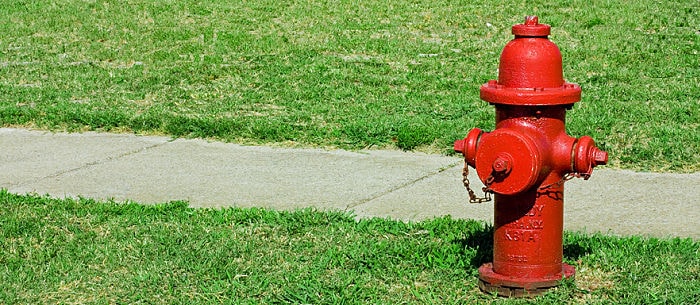If you have a canine companion, dog poop unfortunately plays a big role in your life. But how closely do you really look at it? Probably not very closely — after all, it’s poop, right? Gross. But your pet’s stool is actually a major indicator of his health.
When a dog has a problem with his stool, people often think that he simply has an upset stomach, says Dr. Cindy Bressler, a house-call vet who serves New York City and the Hamptons. But unfortunately it may indicate a more serious health issue. “Metabolic problems, like pancreatitis or liver disease, for example, can cause changes in the stool,” says Dr. Bressler. As such, it’s important that you pay close attention to any changes in your dog’s poop so that you can catch potentially serious conditions early on. Here’s everything you need to know about this not-so-pleasant topic.
What Constitutes Healthy Dog Poop?
In general, healthy dog poop is brown, firm, and slightly curved in shape. Your dog should typically have a bowel movement once or twice a day, and these movements should not involve straining. However, it’s important to remember that not all dogs are the same in this regard.
“Stool needs to be taken in context with how healthy the dog is in other ways,” says Dr. Christina Chambreau, a Maryland-based homeopathic veterinarian and lecturer, and the author of the “Healthy Animal’s Journal.” According to Dr. Chambreau, some signs of a healthy dog include a glowing coat, a healthy diet, high energy, emotional stability, and the lack of an offending odor. Diet and certain medications, such as activated charcoal and Pepto Bismol, can also affect the appearance of otherwise healthy stool.
What Red Flags Should You Watch Out For?
If you or the dog sitter notice any of the five following changes in your dog’s poop and bathroom behavior, you should take him to the vet:
- Blood in the Stool
If your dog has diarrhea, it’s fairly normal to find a small amount of blood in his stool, as this may be caused by irritation of his bowels. But you should be concerned if there’s a lot of blood or you find that your pet’s stool is consistently bloody or black. The latter can be an indicator of internal bleeding, so it warrants an emergency trip to the vet.
- Discoloration
Hard, white stool could be a sign that your dog is getting too much calcium, and you may need to change her diet accordingly. If you find that her poop is yellowish or orange-tinged, you should take her to the vet right away, as this might indicate liver disease or another metabolic problem.
- Unusual Shape or Consistency
If you find that your pet’s poop has suddenly changed to a stringy or toothpaste-like shape, this could indicate a tumor in his colon. You should get this checked out immediately. Soft or runny poop usually indicates diarrhea, while hard, pebble-like poop is a sign of constipation. The latter can also be a sign of dehydration, which can indicate an underlying problem with your pet’s kidneys. If either of these changes lasts for more than 24 to 48 hours, you should get your dog to a vet.
- Changes in Frequency
If you find that your dog suddenly has to eliminate more often, this can be a sign of diarrhea. On the other hand, if your furry friend suddenly doesn’t need to go at all, this may be because he is suffering from constipation. But it’s important to pay attention to what else is going on in your dog’s life, as other factors, such as stress, changes in diet, surgery, and anesthesia can affect the frequency at which your dog poops. If you can’t identify an obvious cause for this change, and you find that your pet’s bathroom behavior doesn’t return to normal after a day or two, you should take him to the vet.
- Straining
Straining can indicate either diarrhea or constipation. It might also be a symptom of a perineal hernia or a blockage caused by something your dog ate, such as a rock. As such, if you notice this behavior, you should request that your vet performs a rectal exam.
What Types of Tests Will Your Vet Perform?
Common parasites, such as worms, can often be seen in fresh stool, but more harmful varieties are harder to spot and can cause diarrhea and other issues. When you go to the vet, be sure to take a stool sample with you for testing. Along with testing for the most common parasites, your vet should also test for a more harmful parasite known as giardia. In addition, he should perform a stool cytology to ensure that all of the normal, healthy gut bacteria are present.
For more information on strange poop-related behavior, check out Why Do Dogs Eat Poop?
Jean Marie Bauhaus is a freelance writer, editor and fantasy author who’s written pet articles for The Daily Puppy, The Nest and Paw Nation. She lives in Tulsa, Oklahoma, with her husband, two cats and an eight-pound chihuahua who runs the show.
*This article is for general informational purposes only. It is not intended nor implied to be providing medical advice and is not a substitute for such advice. The reader should always consult a health care provider concerning any medical condition or treatment plan. Neither Care.com nor the author assumes any responsibility or liability with respect to use of any information contained herein.


